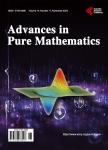Towards Science Unification through Number Theory
Towards Science Unification through Number Theory作者机构:Retired Prof. of Physics University of Paris 11 Orsay France Retired Prof. of Physics University of Strasbourg France Retired Agregee de Mathematiques et Professeur Honoraire à l’Ecole Centrale de Paris France Retired Professeur Honoraire d’analyse Numerique Institut Superieur des Materiaux de Paris France Retired Prof of Crystallography University of Paris 6 Paris France
出 版 物:《Advances in Pure Mathematics》 (理论数学进展(英文))
年 卷 期:2021年第11卷第1期
页 面:27-62页
学科分类:07[理学] 070202[理学-粒子物理与原子核物理] 0702[理学-物理学]
主 题:Number theory Optimal Computation Principle Holic Principle Cosmology Supersymmetry String Theory Bit-String Physics Cellular Automaton DNA nucleotides Crystallography Sporadic Groups
摘 要:The Number Theory comes back as the heart of unified Science, in a Computing Cosmos using the bases 2;3;5;7 whose two symmetric combinations explain the main lepton mass ratios. The corresponding Holic Principle induces a symmetry between the Newton and Planck constants which confirm the Permanent Sweeping Holography Bang Cosmology, with invariant baryon density 3/10, the dark baryons being dephased matter-antimatter oscillation. This implies the DNA bi-codon mean isotopic mass, confirming to 0.1 ppm the electron-based Topological Axis, whose terminal boson is the base 2 c-observable Universe in the base 3 Cosmos. The physical parameters involve the Euler idoneal numbers and the special Fermat primes of Wieferich (bases 2) and Mirimanoff (base 3). The prime numbers and crystallographic symmetries are related to the 4-fold structure of the DNA bi-codon. The forgotten Eddington’s proton-tau symmetry is rehabilitated, renewing the supersymmetry quest. This excludes the concepts of Multiverse, Continuum, Infinity, Locality and Zero-mass Particle, leading to stringent predictions in Cosmology, Particle Physics and Biology.



